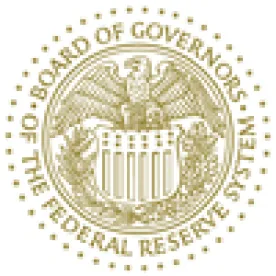On April 4, 2017, Federal Reserve Board Governor Daniel K. Tarullo gave his final speech as a governor before his departure from the Board the next day. Governor Tarullo, widely considered the “most influential Wall Street regulator” during his term as governor, took the lead for the Federal Reserve in developing the agency’s most significant post-crisis regulations.
In his speech, Governor Tarullo defended the capital and stress testing requirements that the federal banking agencies have imposed on the largest banking organizations since the financial crisis. Notably, he also identified certain areas where he believed Congress and/or the banking agencies could provide relief to banking organizations without jeopardizing financial stability. Coming from one of the chief architects of the post-crisis regulatory regime, these remarks are noteworthy because they indicate areas for potential bipartisan consensus as Congress and President Trump’s appointees consider the path forward for regulatory reform.
Areas that Governor Tarullo identified for potential regulatory relief include:
-
Comprehensive Capital Analysis and Review (“CCAR”) Program. Governor Tarullo said that the “time may be coming” for the Federal Reserve to phase out the qualitative component of the annual CCAR assessment for global systemically important banking organizations (“G-SIBs”), after it did so for certain large and noncomplex bank holding companies in January 2017. If the Federal Reserve eliminated the qualitative component of CCAR for G-SIBs, examiners would assess the strength of a G-SIB’s capital planning process through the regular supervision process, and presumably would no longer object to a G-SIB’s capital plan during the annual CCAR assessment based on qualitative deficiencies. Governor Tarullo also said that he “hopes and expects” that the Federal Reserve would move forward with a rulemaking to implement the “Stress Capital Buffer” concept, as well as the relaxation of certain conservative assumptions regarding a banking organization’s balance sheet and capital distributions during the stress period (which he had previously outlined in a September 2016 speech). The Federal Reserve could make all of these changes to CCAR through the rulemaking process, without legislative action.
-
Bank SIFI Threshold. Governor Tarullo said that the $50 billion asset threshold above which a banking organization is subject to enhanced prudential standards, and the $10 billion asset threshold for applicability of company-run stress test requirements, are set too low. The Dodd-Frank Act fixed these thresholds statutorily, and increasing them would require legislative action.
-
Volcker Rule. Governor Tarullo said that the Volcker Rule, as implemented, is too complicated, particularly in its approach to distinguishing permissible market making from impermissible proprietary trading, and “may be having a deleterious effect on market making.” While he did not identify a clear path to simplifying the Rule, he suggested that one approach could involve imposing progressively higher amounts of capital as a banking organization’s trading inventory ages, which would be an indicator that the banking organization’s market making activity has morphed into proprietary trading. At the same time, he indicated frustration with the process of developing the Volcker Rule jointly with other federal financial agencies, and some pessimism that all of the same agencies acting jointly could develop a better approach. In addition, Governor Tarullo stated that the Volcker Rule needlessly imposes burdens on community banks and regional banks that have few or no trading assets, and should exempt all banks with less than $10 billion in assets and other banks that report less than some nominal amount of trading assets. Such exemptions would require legislative action.
-
Capital Requirements for Community Banks. Governor Tarullo said risk-based capital requirements have become “unduly complicated” for community banks, and should be simplified. Depending on the approach, simplifying capital requirements for community banks could require legislation that amends aspects of the Collins Amendment to the Dodd-Frank Act, which imposed a floor on the capital requirements that apply to all insured depository institutions.
-
Supplementary Leverage Ratio (“SLR”). Governor Tarullo stated that the enhanced SLR for G-SIBs, currently set at a flat 2 percent above the minimum SLR for all G-SIBs, could be made to be progressive such that a 1 percent enhanced SLR would apply to the G-SIBs that pose the least systemic risk and a 2 percent enhanced SLR would apply to the G-SIBs that pose the most systemic risk. This change would provide the most relief to G-SIBs that are focused on the custodial businesses, for which the SLR and enhanced SLR are more likely to be a binding constraint than risk-based capital requirements, and which score lower than other G-SIBs on assessments of systemic risk. He disagreed, however, with the notion that the denominator of the SLR should be revised to exclude central bank reserves, which is an approach that the Bank of England took in August 2016 that also provides relief to custodial businesses. The federal banking agencies could amend the SLR and enhanced SLR without Congress taking legislative action.




 />i
/>i

